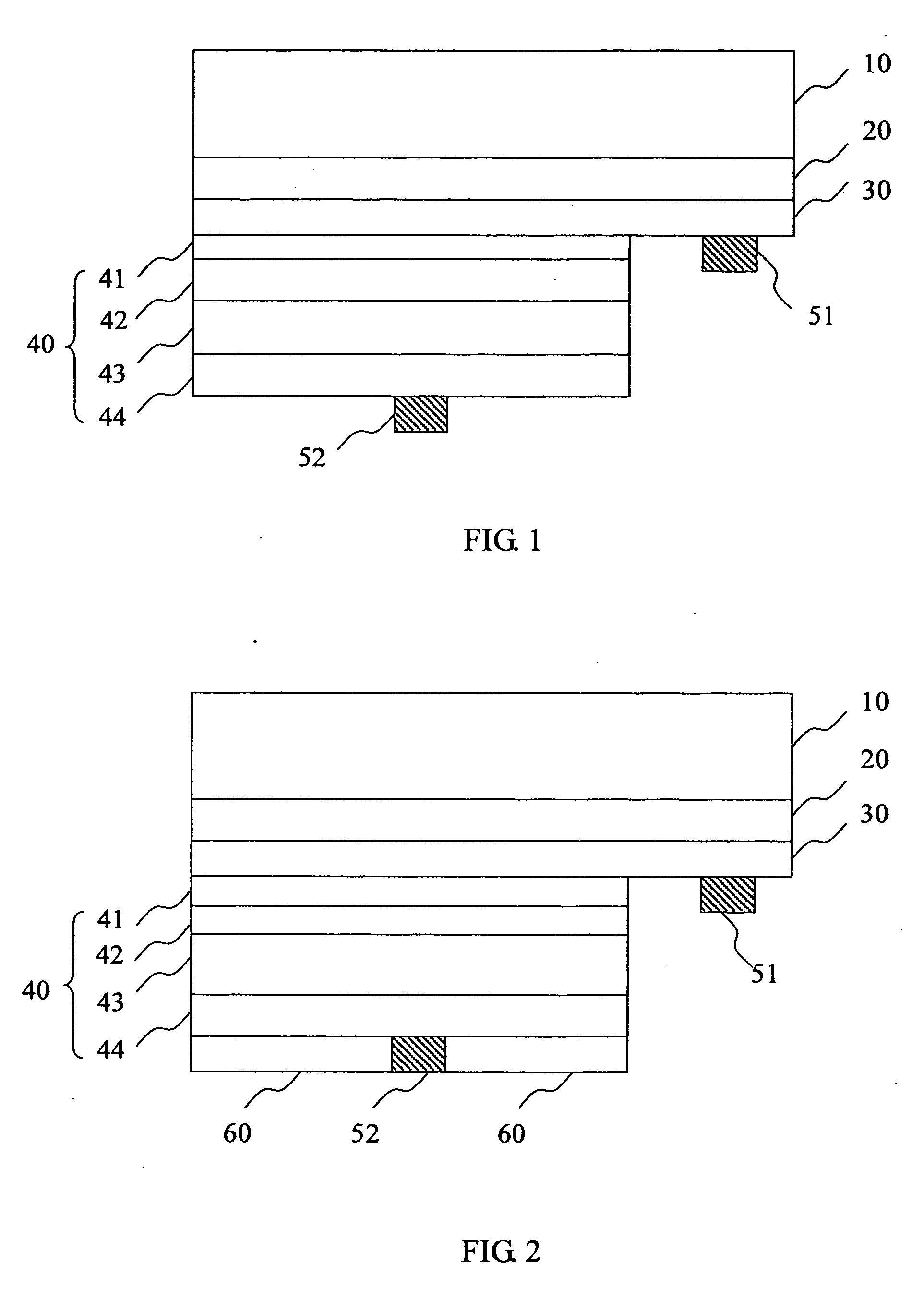Method for producing light emitting diode
a technology of light-emitting diodes and diodes, which is applied in the direction of liquid surface applicators, coatings, semiconductor devices, etc., can solve the problems of significant limit of application, unsatisfactory current spreading, and bubbles at the interface, so as to improve current spreading, reduce resistance, and increase the effect of emitting efficiency
- Summary
- Abstract
- Description
- Claims
- Application Information
AI Technical Summary
Benefits of technology
Problems solved by technology
Method used
Image
Examples
first embodiment
[0025] Referring to FIG. 1, the first embodiment in accordance with the present invention includes a transparent window 10 made from glass, a transparent conductive film 20 made from ITO, a p-type ohmic contact layer 30, an LED epitaxial layer 40 formed on partial surface of the p-type ohmic contact layer 30, and a positive electrode 51 formed on other area of the p-type ohmic contact layer 30. The LED epitaxial layer 40 primarily includes an active layer 43 of undoped AlGaInP, wherein a front surface and a back surface are defined. Between the front surface and the transparent conductive film 20, a second cladding layer 42 of p-type AlGaInP and an oxidation barrier 41 of GaP for preventing the cladding layer 42 from oxidization are formed. On the back surface, a first cladding layer 44 of n-type AlGaInP is formed, on partial area of which the negative electrode 52 is formed.
[0026] The transparent conductive film 20 can be made from other materials than ITO. A thin film made from an...
second embodiment
[0028]FIG. 2 shows a cross section view of the second embodiment, in which a reflective layer 60 is coated on the first cladding layer 44. Therefore, the LED in this embodiment can exhibit higher brightness than that shown in FIG. 1, because all light beams emit from the front side of the LED.
[0029]FIG. 3 shows the third embodiment, which is similar to the second embodiment but the positive electrode 51 is moved to the GaP oxidation barrier 41 from the ohmic contact layer 30.
[0030]FIG. 4 shows the forth embodiment, which is similar to the second embodiment but a heat-transferring set 70 is adhered to the electrodes 51, 52 with wire-bonding glue 71 during wire binding. Accordingly, heat caused by electric power can be brought away, and therefore life of the device is elongated.
[0031]FIGS. 5 and 6 show the manufacturing process of the forth embodiment. First, on a GaAs substrate 80, the first cladding layer 44, the active layer 43, the second cladding layer 42, the oxidation barrier...
PUM
 Login to View More
Login to View More Abstract
Description
Claims
Application Information
 Login to View More
Login to View More - R&D
- Intellectual Property
- Life Sciences
- Materials
- Tech Scout
- Unparalleled Data Quality
- Higher Quality Content
- 60% Fewer Hallucinations
Browse by: Latest US Patents, China's latest patents, Technical Efficacy Thesaurus, Application Domain, Technology Topic, Popular Technical Reports.
© 2025 PatSnap. All rights reserved.Legal|Privacy policy|Modern Slavery Act Transparency Statement|Sitemap|About US| Contact US: help@patsnap.com



